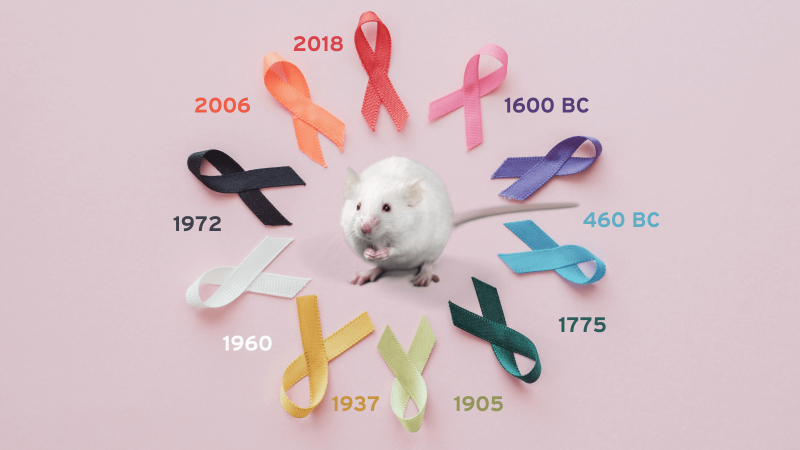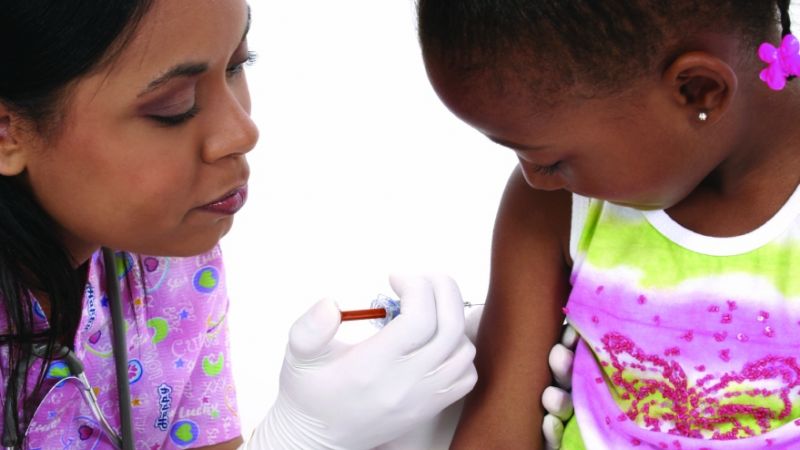
The origin of the word ‘Cancer’ is credited to the Greek physician Hippocrates that lived from 460-370 BC, and was considered the father of modern medicine. Cancers have indeed been around for quite some time, with the earliest known descriptions appearing as far back as 3000 to 1600BC in several papyri from Ancient Egypt describing cancer, as well as a procedure to remove breast tumours by cauterization.
But it wasn’t until the 16th and 17th centuries that it became more acceptable for doctors to dissect bodies and investigate these malignant lumps of cells in the body. From then on, our knowledge on the matter has kept on growing and therapies to fight the parasitic cells have seen the light of day.
UNDERSTANDING CANCER: environmental causes
 The first environmental cause of cancer was identified by British surgeon Percivall Pott, who discovered in 1775 that cancer of the scrotum was a common disease among chimney sweeps. His report is the first to clearly link an environmental exposure to the development of cancer. The cause was confirmed over a century later with Yamagiwa Katsusaburō’s pioneering work. In 1915, he induced cancer, more precisely, squamous cell carcinomas, on the ears of rabbits by applying coal tar to their skin, providing experimental proof that chemicals can cause cancer. Later, ICR researchers identified the first carcinogens in cigarette smoke and coal tar. Over the next 10 years, Kennaway and his team meticulously separated out the constituents of coal tar and tested each in turn to see whether they caused cancer when applied to the skin of mice.
The first environmental cause of cancer was identified by British surgeon Percivall Pott, who discovered in 1775 that cancer of the scrotum was a common disease among chimney sweeps. His report is the first to clearly link an environmental exposure to the development of cancer. The cause was confirmed over a century later with Yamagiwa Katsusaburō’s pioneering work. In 1915, he induced cancer, more precisely, squamous cell carcinomas, on the ears of rabbits by applying coal tar to their skin, providing experimental proof that chemicals can cause cancer. Later, ICR researchers identified the first carcinogens in cigarette smoke and coal tar. Over the next 10 years, Kennaway and his team meticulously separated out the constituents of coal tar and tested each in turn to see whether they caused cancer when applied to the skin of mice.
The genetic factor
By the beginning of the 20th century, researchers were also pointing to the genetic basis of some cancers. In 1902, the German zoologist Theodor Beveri, discovered in sea urchin eggs, that mutations on chromosomes could generate a cell with unlimited growth potential which could be passed on to its descendants. He even suggested the existence of cell cycle check points, tumour suppressor genes and oncogenes, knowledge that would later be used by therapies to fight the disease.
The viral cause
Some of the earliest models of cancer growth and spread were in chickens in 1911, which led to the discovery of the eponymous Rous sarcoma virus by Peyton Rous. By filtering cells from some malignant connective tissue that had appeared spontaneously in a chicken and injecting them into healthy chickens, these developed similar tumours. His experiments showed that the filtrate contained the cancer-causing agent that eventually became known as Rous sarcoma virus. Although its significance was not clear at the time, the identification of the Rous sarcoma virus led to studies on how viruses cause tumours and subsequent use of hormone treatments to limit growth in rats, mice, rabbits, chickens, primates and horses. In 1966, Rous received the Nobel Prize for his discovery.
 22 years after the discovery of the Rous sarcoma virus, Richard Shope injected rabbits with horny outgrowths visible in some rabbits. The healthy animals started growing horns too, hinting that viral particles might be responsible for the outgrowths. The horns were in fact warts, and Shope’s work led to the discovery of the cottontail rabbit papillomavirus (CRPV), also a cancer-causing virus. Rous then identified a papilloma, a type of skin tumour that could be transmitted between rabbits using cell-free extract. Rous showed that these benign tumours could become malignant following exposure to certain chemicals. He proposed that the transformation of normal cells into cancerous cells may consist of several stages, such as virus-exposure, hormonal changes or exposure to chemical agents.
22 years after the discovery of the Rous sarcoma virus, Richard Shope injected rabbits with horny outgrowths visible in some rabbits. The healthy animals started growing horns too, hinting that viral particles might be responsible for the outgrowths. The horns were in fact warts, and Shope’s work led to the discovery of the cottontail rabbit papillomavirus (CRPV), also a cancer-causing virus. Rous then identified a papilloma, a type of skin tumour that could be transmitted between rabbits using cell-free extract. Rous showed that these benign tumours could become malignant following exposure to certain chemicals. He proposed that the transformation of normal cells into cancerous cells may consist of several stages, such as virus-exposure, hormonal changes or exposure to chemical agents.
In 1937, Shope noticed that the rabbits that overcame a CRPV infection were immune to reinfection. Using CRPV in rabbits, BPV in cattle and canine oral papillomavirus, researchers found that whichever the animal, it was possible to protect against the papillomavirus and stop the development of the papillomas or the cancers through various methods of immunization.
Animal and human papillomaviruses have a lot in common. This helped enormously in the development of vaccines against cervical cancer, especially because the Human Papillomavirus (HPV) could not be replicated in cell culture, nor could it be transmitted to other mammals.
Hormone dependency
While the theory of tumour progression was readily accepted, it was not until the 1950s that the role of viruses as cancer-causing agents was recognised. In contrast, Huggins’ work, in the 40s, which found that the growth of tumours was dependant on the natural hormones of the body, found immediate application.
Studying the prostate gland in dogs, he found that its function was stimulated by male sex hormones and inhibited by female sex hormones. He believed that the human prostate would react to hormones in a similar way, and that cancerous cells retained some properties of their cell type, suggesting that reducing male sex hormones or increasing female hormones could treat prostate cancer. Therapeutic results confirmed these assumptions: the human and dog prostate behaved similarly. Even patients with only a short time to live showed improvement from this new type of treatment, which had fewer side effects than other therapies.
The immune component
In the early 60s, Professor Jaques Miller made a discovery that was going to change the world of cancer but more globally immunology. He discovered the function of the thymus and two main subsets of lymphocytes, T cells and B cells. At the time, Professor Miller was researching leukaemia in mice, studying a cancer-causing virus called murine leukaemia virus. He found that removing the thymus could prevent leukaemia in mice which had previously been injected with the cancer-causing virus.
He initially proposed that the virus might be multiplying within the thymus, and so he removed the thymus of new born mice, to test whether this would prevent the development of cancer following later viral infection. However, he found that these new born mice died, regardless of whether they had been inoculated with the virus. When Professor Miller examined the blood of the mice, he found that they had a greater tendency for infection and a lower than usual concentration of a type of white blood cell called lymphocytes. Removing the thymus in adult mice had no detrimental immunological effect, suggesting the organ was essential specifically for the development of the immune system.
This was the first demonstration that the thymus had an immunological function. This fundamental discovery helped us to understand how the body protects itself from cancer, offering the possibility to exploit these processes in new cancer therapies.
The oncogenes
As knowledge on cancer kept growing, researcher dug deeper in the field of genetics and found the existence of oncogenes – genes that has the potential to cause cancer. In 1976, Dominique Stehelin, Harold Varmus, J. Michael Bishop, and Peter Vogt found out that the DNA of normal chicken cells contains a gene related to the oncogene of avian sarcoma virus, which causes cancer in chickens. This finding eventually led to the discovery of human oncogenes. This proof of a physical underpinning of the cancer gene hypothesis had tremendous impact on a fundamental challenge of medicine and decoding the molecular basis of human carcinogenesis.
This leads to the discovery in 1979, of the most commonly mutated gene in human cancer – the TP53 gene (also called p53). As a tumour suppressor gene, its protein helps control cell proliferation and supress tumour growth. This would later become the target of many therapies.
But it was all well and well to understand what caused cancer, the more pressing matter was finding a solution to stop the disease. Modern cancer treatments such as chemotherapy, radiation therapy, other drugs and a number of surgical techniques, owe their existence to the use of animals in research.
FIGHTING CANCER
Surgery
Surgery to fight cancer had been around for the last 3000 years. The instinct of cutting out the lump that is causing pain and discomfort was pretty obvious. But it wasn’t until 1882 that William Halsted performed the first radical mastectomy to treat breast cancer. This surgical procedure still remained the standard operation for breast cancer until the latter half of the 20th century.
Radiation
For the first non-surgical treatment to fight cancer, we need to turn to physics and chemistry rather than medicine and biology. At the end of the 19th century, Marie Curie and Pierre Curie had discovered radiation. In 1903, S.W. Goldberg and Efim London first used radiation therapy to cure cancer. They describe the use of radium to treat two patients with basal cell carcinoma of the skin. The disease was eradicated in both patients.
With radiation also came the first signs of multi-disciplinary approaches to cancer treatment. The surgeon was no longer operating in isolation, but worked together with hospital radiologists to help patients.
Over the past two decades, significant advances in radiotherapy technology have enabled increasingly sophisticated methods for treatment planning, delivery and imaging to be implemented into routine radiation oncology practice. As such, innovations in radiotherapy can be attributed primarily to technological developments rather than a more comprehensive understanding of the radiobiology underpinning responses in tumour and normal tissue that can be achieved through validation in animal models. Accurate simulation of the spatial and temporal complexity of dose typically delivered during contemporary radiotherapy techniques, such as intensity-modulated radiotherapy, likely facilitated a more thorough understanding of the biological basis of tissue responses to radiotherapy.
Chemotherapy
By the mid 20th century, researchers were also developing chemotherapy, often still used today. In the 1950s researchers at the ICR began work on a family of chemotherapy agents, based on work conducted at Yale University on nitrogen mustard, a derivative of mustard gas. The Yale researchers had found it to reduce the size of tumours in mice, the treated mice survived over three times longer than those left untreated (84 days compared with 21 days). Similar results were then shown in a human trial in 1942, highlighting the potential for chemicals to be used as a therapy for the first time.The ICR scientists altered the chemistry of nitrogen mustard, producing derivatives that had anti-cancer properties but were more effectively taken up into tumour cells.
Working on mustard gas, which was a known carcinogenic, researchers were also able to show that mustard gas reacts with both pure DNA and with the DNA of mice when injected into tumours. This provided the first conclusive evidence that the basic cause of cancer is damage to DNA. The discovery changed scientific opinion dramatically and marked a turning point for cancer research. Until that point, scientists had assumed carcinogens caused cancer by acting on proteins, rather than genes.
Mice models in the 1960s also paved the way for combination chemotherapy. Scientists showed that drug resistance to one drug could be overcome by the use of another. In the present day, the majority of children with acute lymphocytic leukaemia are cured through the use of aggressive combination chemotherapy programs.
Research in mice has also helped develop non-animal methods for screening potential chemotherapeutic compounds. Fluids from the peritoneal cavity of mice have allowed scientists to grow lymphoblastic cells in vitro. These cell lines, called L1210 cells are used today for screening compounds before they are administered to animals – reducing the number of animals needed.
In the past century, the contribution of mice through animal testing, to the development of chemotherapy has been tremendous. Without the use of mice, we would not have the high remission rates for all patients that currently exist, with remission for almost 85% of all sufferers.
Hormonal therapy
After Higgins’ work in 1941, Charles Huggins, on the hormonal dependency of certain cancers, researchers developed a new way to fight cancer: hormonal therapy which continues to be a mainstay of prostate cancer treatment.
Prostate cancer only naturally occurs in significant numbers in humans and dogs. While the cancer in dogs shares characteristics with humans, there are differences in the likelihood of the cancer metastasizing and the tissue of the prostate. However, by studying the prostate gland in dogs, Charles Huggins discovered that the growth of tumours was dependant on the natural hormones of the body. Reducing male sex hormones or increasing female hormones could treat prostate cancer. Even patients with only a short time to live showed improvement from this new type of treatment, which had fewer side effects than other therapies. For his work and the treatments, he helped to develop, Charles Huggins was awarded a Nobel Prize in 1966.
Vaccines
As mentioned above, in the beginning of last century, researchers incriminated viruses for certain types of cancer. It then became natural to try to make a vaccine to protect against certain forms of cancer. In 2006, The Food and Drug Administration (FDA) approves the human papilloma virus (HPV) vaccine Gardasil, which protects against infection by the two types of HPV that cause approximately 70% of all cases of cervical cancer. And in 2009, it approved Cervarix, a second vaccine that protects against infection by the two types of the human papilloma virus (HPV) that cause approximately 70% of all cases of cervical cancer worldwide.
Creating a vaccine was problematic because even the DNA from deactivated virus can cause cancer. Additionally, each papillomavirus can only be cultured in its respective host species. Species-specific vaccines were created in the 90s for rabbits, cows and dogs using the viral outer shell, and all promoted high levels of antibodies and were 90% effective.
Eventually John Kneider came up with a way to grow human papilloma virus (HPV) in nude mice. These mice had a defective immune system that does not reject tissue transplants from other animals so Kneider transplanted human cervical tissue and foreskin tissue onto the mice, which were then used to test for a vaccine.
Immunotherapy
The latest therapy that saw the light of day is immunotherapy. Developed in the 90’s and rewarded with a Nobel Prize in 2018, the pioneering work led by Both P. Allison and Tasuku Honjo in parallel, helped unleash the inherent ability of our immune system to attack tumour cells and established an entirely new therapeutic principle in the fight against cancer. In both cases mice were the primary animal model that showed the potential for people.
In 2011, the first checkpoint antibody treatment, ipilimumab, was approved by the FDA for inoperable metastatic melanoma. Clinical trials had also shown some benefits of anti-CTLA-4 therapy on lung cancer or pancreatic cancer, specifically in combination with other drugs. Research is still ongoing on the matter but the discovery has already saved millions for which the more conventional treatments were ineffective.
CANCER RESEARCH TODAY

Today, animal experiments in mice and other animals continue to be at the forefront of cancer research, playing a key role in the development of new therapies. The development of techniques to modify the genes of mice has led to a great deal of interest in them for cancer research, and recently studies of GM mice have yielded important insights into particular types of cancer such as acute myeloid leukaemia and pancreatic cancer, as well as increasing understanding of processes involved in many cancers, such as the role of cancer stem cells.
This is not an end to modern day cancer research, there is still much to be discovered and much to apply to beat the disease that killed 9,8 million people, in 2018 alone, and affected 17 million people.
REFERENCES
http://www.animalresearch.info/en/medical-advances/nobel-prizes/causes-and-treatment-of-tumours/
http://www.animalresearch.info/en/medical-advances/articles-lectures/animals-and-cancer-research/
http://www.animalresearch.info/en/medical-advances/articles-lectures/animals-cancer-research/
https://embryo.asu.edu/pages/discovery-p53-protein
https://www.ncbi.nlm.nih.gov/pmc/articles/PMC4687565/
https://www.ncbi.nlm.nih.gov/pmc/articles/PMC4277387/
http://www.animalresearch.info/en/medical-advances/diseases-research/human-papillomavirus-hpv/
http://www.animalresearch.info/en/medical-advances/diseases-research/cervical-cancer/
https://www.cancer.gov/research/progress/250-years-milestones
http://jcs.biologists.org/content/121/Supplement_1/1.full
https://www.cancer.org/cancer/cancer-basics/history-of-cancer/cancer-treatment-radiation.html
http://www.animalresearch.info/en/medical-advances/nobel-prizes/2018/
https://www.cancerresearchuk.org/health-professional/cancer-statistics/worldwide-cancer
Last edited: 4 March 2022 12:37



